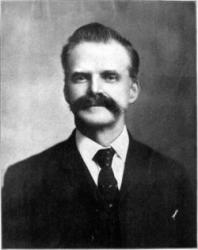Planning worship?
Check out our sister site, ZeteoSearch.org,
for 20+ additional resources related to your search.
- |
User Links
Search Results
How long, dear Jesus, oh! how long
Meter: 8.6.8.6 Appears in 18 hymnals Hymnal Title: The Southern Harmony, and Musical Companion (New ed. thoroughly rev. and much enl.) Lyrics:
1.
How long, dear Jesus, oh! how long
Shall that bright hour delay;
Fly swiftly round, ye wheels of time,
And bring the promised day,
(Repeat previous line).
Used With Tune: NORTHFIELD
How long, dear Jesus, oh! how long
NORTHFIELD
Appears in 61 hymnals Composer and/or Arranger: Ingalls Hymnal Title: The American Vocalist Incipit: 15435 13223 32121 Used With Text: How long, dear Saviour
NORTHFIELD
PROMISED DAY
Appears in 1 hymnal Composer and/or Arranger: L. M. Ranford Hymnal Title: The Sacred Harp Tune Key: F Major or modal Incipit: 13535 66535 53215 Used With Text: How long, dear Savior, O how long
PROMISED DAY
How long, dear Saviour, O how long
Hymnal: Conference Hymns. a new collection of hymns, designed especially for use in conference and prayer meetings, and family worship. #298 (1849) Hymnal Title: Conference Hymns. a new collection of hymns, designed especially for use in conference and prayer meetings, and family worship. Languages: English
How long, dear Saviour, O how long
How long, dear Savior, O how long
Author: Isaac Watts, 1674-1748 Hymnal: Sacred Melodies #d120 (1843) Hymnal Title: Sacred Melodies
How long, dear Savior, O how long
How long, dear Saviour, O how long
Author: Isaac Watts Hymnal: Sacred Tunes and Hymns #38 (1913) Hymnal Title: Sacred Tunes and Hymns Languages: English Tune Title: NORTHFIELD
How long, dear Saviour, O how long
Wilson Marion Cooper

1850 - 1916 Person Name: W. M. Cooper Hymnal Title: The Sacred Harp Composer of "POYNER" in The Sacred Harp Produced a major revised edition of the Sacred Harp fasola tunebook, 1902.
Wilson Marion Cooper
L. M. Ranford
Hymnal Title: The Sacred Harp Composer of "PROMISED DAY" in The Sacred Harp L. M. Ranford was from Harris County, Georgia and was a member of the Southern Musical Convention.
The Original Sacred Harp, 1911
L. M. Ranford
Jeremiah Ingalls
1764 - 1838 Person Name: Ingalls Hymnal Title: The Southern Harmony, and Musical Companion (New ed. thoroughly rev. and much enl.) Composer of "NORTHFIELD" in The Southern Harmony, and Musical Companion (New ed. thoroughly rev. and much enl.) Jeremiah Ingalls USA 1764-1838. Born at Andover, MA, his father died of hardships from the American Revolutionary War when he was thirteen. In VT, he worked as a farmer, Cooper, Taverner, and choirmaster. He mastered the bass viol (similar to a cello) and became a composer. He moved to Newbury, VT, in 1787, and in 1791 he married Mary (Polly) Bigelow of Westminster, MA, and they had eleven children (nine living to adulthood): Smith, Jeremiah, Joshua, Jeremiah, Mary, Moses, Elizabeth, John, Almyra, Isaac, and Hannah. He taught singing and began leading the singing at the First Congregational Church there. The choir became well-known, and people came from miles around to hear them sing. In 1800 he built and operated a tavern. He also worked as a cooper. In 1803 he became a deacon, and in 1805 he published a song book, “Christian Harmony”, that contained folk and popular songs with tunes used in spiritual songs sung in early religious revivals and campmeetings, some becoming hymns in later song books. It was said that at times he would be so immersed in his music that his livelihood suffered as a result. He was removed and excommunicated from his church in 1810, having a falling out with the church due to marriage infidelity that he refused to repent of. He ran his tavern for a number of years, but finally sold it and moved to Rochester, VT, in 1819, where he became the first choirmaster of the Church of Christ. His tenure there was successful, and he was a signer of the document establishing construction of the first church building in Rochester (1812). Later, his son, John, succeeded him as choirmaster there. the family’s last move was to a farm near Hancock, VT. He was described as short, portly, good-humored, and absentminded, and having a high voice, but singing bass well. His family was musical, some noted for their musical abilities. A singing society in VT was named for him and promoted singing events. Some of his music became well-known around the world. He died at Hancock, VT.
Note: It is said that he wrote a letter to the First Congregational Church in Westminster 18 years after departing repenting of his infidelity (allegedly after his illegitimate son, Thomas, was of age, but the letter was lost in church records, although the church said they had received it.
John Perry
Jeremiah Ingalls


 My Starred Hymns
My Starred Hymns


